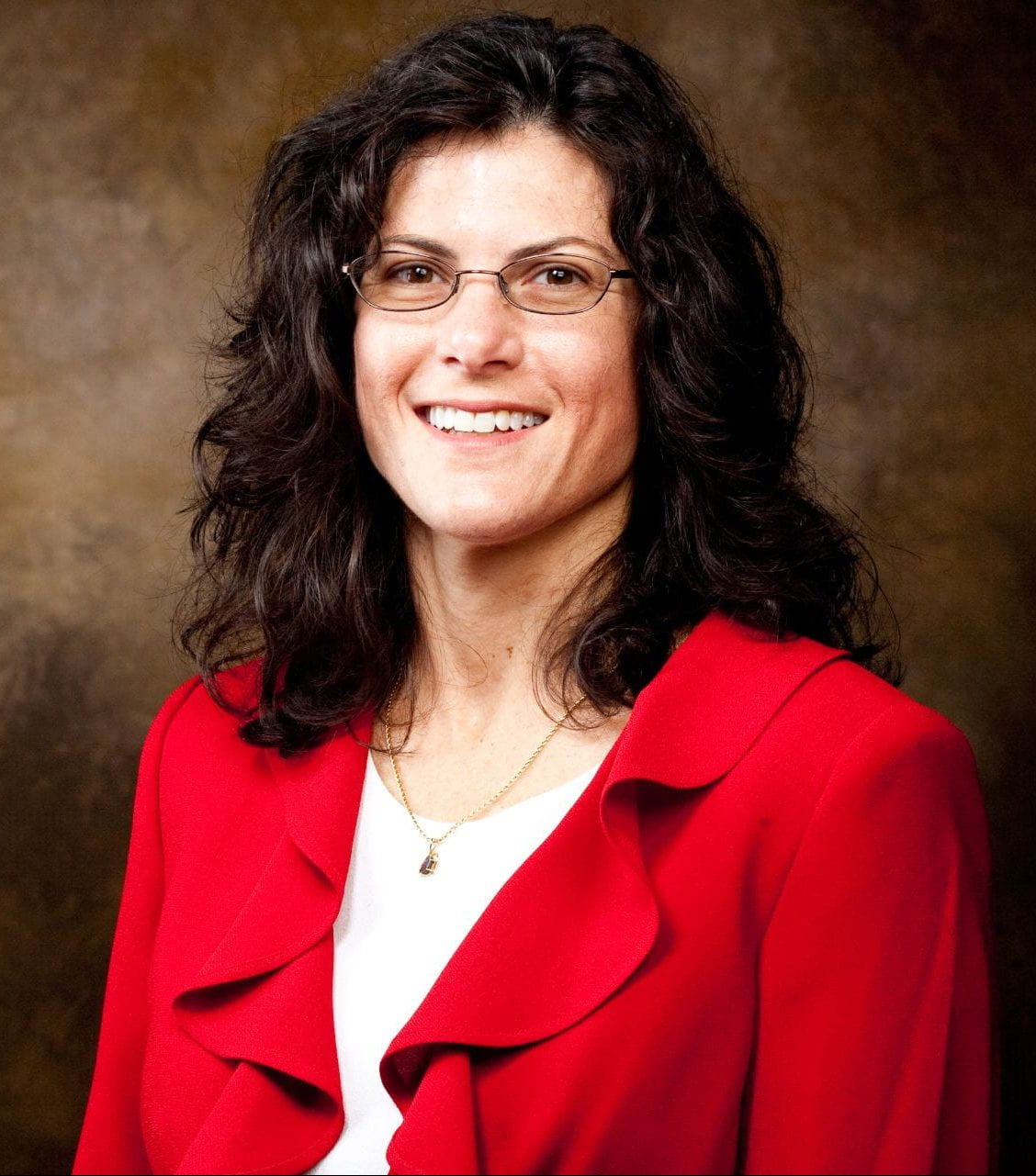Mary Savin and Norman Dennis gave a presentation on Effectively Evaluating Teaching at the TFSC New and Not-So-New Faculty Lunch Series.
 |
 |
| Mary Savin Professor Crop, Soil & Environmental Sciences |
Norm Dennis Senior Associate Dean and University Professor, College of Engineering |
Debunking the Myths
They started out with a discussion and debunking of many of the myths related to teaching evaluations. (See the PowerPoint presentation for details of these myths with citations.)
- MYTH 1: Students who gave a professor a bad review now will realize years down the road that, in retrospect, they learned a lot from the course.
- FACT: There is a high correlation between student evaluations at the end of the semester, and reviewers that have years of experience like peers, administrators, and upperclassmen.
- MYTH 2: Student evaluations are just popularity contests. Easy teachers / easy graders get the highest ratings.
- FACT: Instructors who assign more work and more difficult work tend to be rated as most effective. There are conflicting results regarding correlations between students getting higher grades and giving higher ratings, but if students learn more from an instructor then it makes sense that they would get higher grades.
- MYTH 3: Even if student evaluations have some validity, there’s no value in the multiple-choice forms used to collect most of them. You’ve got to interview students and ask open-ended questions for the results to mean anything.
- FACT: There is a high correlation when using multiple methods of rating.
- MYTH 4: Instructors who get high ratings aren’t really doing a better job of teaching.
- FACT: Students who rate their instructors higher tend to get higher scores on common external exams.
- MYTH 5: Student evaluations don’t improve teaching.
- FACT: Students of instructors who got student feedback scored higher on achievement tests and assessments of motivation for learning than students of instructors who got no feedback.
Why are we evaluating teaching?
Norm Dennis said it best by explaining that we’re doing evaluations of teaching in order to “improve our teaching for better learning.” It provides feedback that allows for continuous improvement.
What should we assess?
It isn’t simply about in-class teaching performance. A thorough and accurate assessment also includes things like course design and assessments.
How will we evaluate?
The new version of Teaching Policy 1405.11, which will go into effect in Fall of 2020, details the types of materials other than student evaluations that can be submitted as evidence of teaching quality. The main goal of this new method of teaching review is to show proof of the following: student satisfaction, student learning, and continuous improvement.
Evidence from students
- Results from student evaluations, including comments
- Results from former student evaluations
- Evidence of student achievement
- Evidence of effective advising
- Evidence of learning
Evidence from fellow faculty
- Evaluation of course materials
- In-class visitation (formative and summative assessments)
- External evaluation
Evidence from the instructor
- Self-assessment
- Evidence of Curriculum Development
- Evidence of Scholarship (SoTL)
- Professional Development
- Awards
A Model Instructional Strategy
- Why do we need to know this?
They care a lot more if they understand why they’re learning something and how it will relate to future goals. - How does this relate to what we already learned?
Remember that they’ve slept since the last class, so you may have to remind them about how this connects to previous lectures. - Let the students know from the beginning what their learning objectives are.
Start the lesson with a list of goals for things that you want them to take away from that day. - Provide the information.
Try to be fun about it. If you don’t seem excited about the material then they certainly won’t be. - Give them activities to provide critical thinking about the information.
Students retain knowledge better when they’ve been allowed to think outside the box about it, rather than just reciting rote snippets of information. - Provide models when possible.
Boost the theatrics! Dress up in period costume. Play a game about how chemical bonds work. Sing a song about electrons. - Let them apply the knowledge in both a familiar context and a new and unfamiliar context.
Just make sure you’re not putting it in a new and unfamiliar context for the first on the exam. They really don’t like that! Make these assessments low or no stakes so they can really think about it without fear of a bad grade. - Assess the learners’ performance and provide feedback.
The presenters discussed models of teaching assessment and improvement.
A Teaching Model
- Structured organization
- Based on learning objectives – Give them those learning objectives and when they come back and ask you what is going to be on the exam, (because they certainly will) tell them to go look at their learning objectives.
- Appropriate to the subject matter – Remember to pace the information that you’re giving the students. You don’t want to dump all the information about Chemical Engineering on a freshman the moment they walk in the door. Build that knowledge slowly from the ground up.
- Varied, to appeal to different learning styles – If you can, try to assess the learning styles of your students and work with that. They’re much more likely to retain the information if you present it in a way that works for them.
- Engaging presentation
- Clear written and verbal communication
- High degree of contact with students – Make sure they feel welcome during your office hours. Some instructors even bring their pet during some office hours and students can come and visit with them and their dog at the same time.
- Physical models & demonstrations – Dress up, and make it fun! Let your creativity fly! Or if you don’t feel creative, Google it. You’ll find all kinds of interesting ideas for teaching different subjects that you can adapt to your own subject and style.
- Enthusiasm – Be excited! Show your students the love of the subject that made you want to spend years of your life mastering it.
- Positive rapport with students – Try to be entertaining, but be careful of humor especially in the area of politics.
- Frequent assessment of student learning
- Classroom assessment techniques – This is a fantastic way to establish along the way if they’re grasping the subject matter. That way you don’t wind up with poor grades on a quiz or exam before you realize they haven’t understood. You could also ask them at the end of the class a set of exit questions like “what was the thing in class that was most unclear today?” That way you can go back and cover that again to make sure that they’ve all gotten it.
- Out-of-class homework and projects – Feedback can be given on Blackboard assignments in written, video, or audio format.
- Appropriate use of technology – Use the best technology to fit the subject matter. If you’re using PowerPoints, provide them with enough information on the slides so that they can take their own notes, and make sure that it’s easy to see and read from the back of the room. If you give them all of the information on the PowerPoints then it is possible that they will just check out mentally and pay no attention to the lecture and class discussion. Questioning techniques can help to keep the class engaged and promote discussion.
On Feedback
- Be positive – Don’t just tell them what they did wrong. Start out by telling them what they did right, and point out errors in a positive way when possible.
- Be specific – Let them know exactly how they can improve.
- Be timely – Get the feedback to them as quickly as possible so that the assignment is fresh in their minds.
- Advance learning towards a goal – Help them to understand their mistakes and learn from them to reach their learning goals.
- Thoughtfully worded – Make sure to word the feedback in a way that will be of the most benefit to them.
- Involve the learner – Address the feedback to the student directly and really involve them in the process of improving through the use of that feedback rather than just handing them a list of the things that they did wrong.
Peer Assessments
Peer assessments are a great way to improve your teaching. Have several of your colleagues come in and watch your class. Peer reviewing isn’t done very commonly at our university. Most of the participants who said that they had recently been peer-reviewed had that experience as graduate students. The frequency of peer reviews won’t increase until department heads support it and a culture is built that values it. Some departments do have peer review programs, however.
Things to remember for peer review
Let the instructor know why they are being reviewed, what to expect during the review process, and what the structure of that review is. It can be emotionally difficult for people to receive feedback, so the receiver of the assessment should stay completely quiet. It isn’t necessary for them to defend their choice. It’s best just to listen to how those choices were received by the reviewer. Providing a form to the reviewer allows them to more easily provide their thoughts in a way that can be helpful to the person being reviewed.
Co-teaching as ongoing peer review
If your department allows co-teaching, then you can use that opportunity to see how others teach on a day-to-day basis and use those observations to improve your own teaching.
If you would like more information on how to incorporate technology into your courses, reach out to us at tips@uark.edu.
For more information on the topic, the presentation can be downloaded and viewed as a PDF or you can email them.
This content was developed from a presentation by Mary Savin and Norman Dennis which was sponsored by The Wally Cordes Teaching and Faculty Support Center (TFSC) at the University of Arkansas.